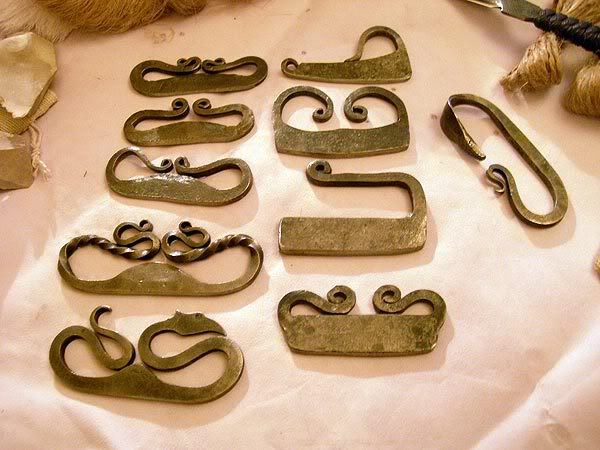I thought a quick thread on using real flint & steel as opposed to ferrocium rod (Firesteels) might be interesting..........
Here goes
To do this you will need some high tech ingredients:
A piece of flint with a sharp edge,
A piece of high carbon steel (an old piece of file works well),
Some charcloth (we've done making charcloth on another thread)
A leather pouch to keep it in and look authentic

Okay I confess, thats a proper "steel" - it is forged from an old file though!
First, before you get going, prepare your self a "nest" made out of bone-dry tinder. A good double handful of dry (and I mean dry) grass is great. For the demo I used some wheat straw - because it was handy. When using course tinder like straw, rub and crush it to break the coarse stems up into finer fibres. Make a ball when doing this and then open it out into a ball shape.

Next, take your flint shard in your left hand. You do have flint round you yes? We have tons (literally) - the ploughs keep dragging 18" nodules out of the fields. Did you know that flint comes from sponges? It does really...sorry, rambling. Your flint needs to have a sharp edge like this

Next step is to tear a piece of charcloth and clamp it on top of the flint with your thumb - like this

Next take your striker, piece of carbon steel, old file etc. and hold the flint pointing upwards. Imaging you are trying to shave the edge of the steel with the flint being a knife. However you hold the flint still and bring the striker down sharply just grazing the edge of the flint. Sparks fly and will catch on the charcloth.

Blow a little on the cloth to get it going

Drop your charcloth into the nest now

Next gather the nest in both hands, closing the nest so the charcloth is loosely surrounded by tinder

Raise your hands towards your mouth, blow on the cloth through the tinder in a long steady puff. Lower the nest, breathe in then raise the nest and blow again. Repeat until you get a flame

Make sure your tinder bundle is well alight....then place in the fire and add fine twigs and build the fire

I hope thats interesting....if anyone likes the fancy steel - I claim no credit - Jason made it for me
http://www.jasonbhall.freeserve.co.uk/
but after reading your other post Mike, I remembered seeing a video of a Swedish guy who was making a series of short bushcraft/survival videos. In one he got a fire going with his Fallkniven F1 and a bit of quartz
- though I seem to remember he said it took a hundred or more strikes to get a decent spark!












